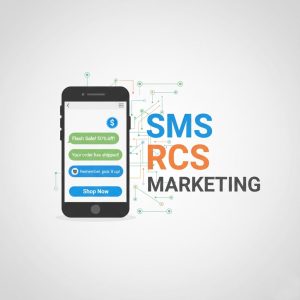8 Proven Strategies to Reach Your Customers via Mobile Devices

Mobile devices have become an integral part of our daily lives, with consumers relying on them for everything from shopping online to connecting with friends. For businesses, this presents a unique and powerful opportunity to reach customers right where they are. But how do you effectively tap into the immense potential of mobile marketing?
Why Mobile Marketing Matters

Before we jump into the strategies, it’s essential to understand why mobile marketing is critical for your business. According to Statista, more than 60% of web traffic comes from mobile devices. Additionally, the mobile commerce market is projected to hit $620.97 billion in 2024.
These numbers reveal a clear trend: customers are prioritizing their smartphones and tablets for browsing, shopping, and interacting with brands. Without a solid mobile strategy in place, you’re missing out on a vast audience of potential buyers.
1. Optimize Your Website for Mobile
Responsive design is no longer optional; it’s essential. A mobile-friendly website ensures that users have a seamless experience regardless of screen size. Poor navigation, slow load speeds, and unresponsive buttons can drive mobile users away, directly impacting your bottom line.
How to Improve Mobile Optimization
- Use responsive web design to adapt your site to different screen sizes.
- Compress images and use caching to improve load speeds.
- Test your website on various mobile devices to ensure compatibility.
- Prioritize easy navigation with larger touch targets for buttons and menus.
Tools like Google’s Mobile-Friendly Test can help you assess and improve your site’s mobile compatibility.
2. Leverage SMS Marketing
Short Message Service (SMS) marketing is a direct, efficient way to reach customers. Unlike other forms of communication, text messages boast a staggering 98% open rate, with most being read within three minutes of delivery.
Best Practices for SMS Marketing
- Keep your messages short, clear, and actionable.
- Use personalized greetings to make the interaction feel unique.
- Include a clear call to action (CTA), like a link to your website or a special offer.
- Always provide an opt-out option to comply with data privacy regulations.
For example, a retail store might send a text like this:
“Hi [Customer Name], we’ve got a special deal for you! 20% off sitewide. Use code MOBILE20. Offer expires midnight! [Link]”
3. Invest in Mobile Apps
A dedicated mobile app can take customer engagement to the next level by offering a personalized experience. Apps allow you to leverage push notifications, reward programs, and location-based promotions to deliver value directly to your customers.
Key Features to Include in Your Mobile App

- Easy navigation and intuitive user interface.
- Push notifications for personalized offers.
- Loyalty programs to incentivize repeat purchases.
- Integration with mobile payment options like Apple Pay or Google Pay.
Apps like Starbucks are great examples, with features like mobile ordering, rewards tracking, and personalized recommendations.
4. Create Mobile-Friendly Content
Not all content translates well to small screens, and your content needs to adapt. Short, engaging, and scannable content is key to holding your audience’s attention.
Tips for Mobile Content Optimization
- Use concise headlines and short paragraphs.
- Break up text with bullet points, subheadings, or infographics.
- Prioritize video content, as mobile users consume video more than any other format.
- Design emails with mobile layout in mind, ensuring images and CTAs display properly.
5. Utilize Push Notifications
Push notifications are a powerful tool for re-engaging users who’ve downloaded your app. When used strategically, they can drive traffic, boost sales, and build loyalty.
Best Practices for Push Notifications
- Personalize messages based on user behavior or preferences.
- Keep notifications timely, such as reminders for abandoned carts or notifications about flash sales.
- Don’t overdo it. Stick to a schedule that adds value rather than annoying users.
For instance, a fashion retailer may send this notification:
“Flash Sale Alert! Get 30% off summer dresses for the next 48 hours. Shop now!”
6. Use Location-Based Marketing
Location-based marketing allows you to target users based on their geographic location using tools like geofencing or beacon technology. This can be used for real-time promotions or to drive foot traffic to physical stores.
Examples of Location-Based Marketing
- A restaurant sending a discount coupon to users within a one-mile radius.
- A retail store offering exclusive deals to customers who enter their premises.
Location-based ads also integrate seamlessly into mobile apps and social media platforms for hyper-local targeting.
7. Advertise on Social Media
Social media platforms like Instagram, TikTok, and Facebook are predominantly accessed on mobile devices, making them a prime location for mobile advertising. Mobile ads on these platforms can appear in user feeds, Stories, or even as sponsored content.

Mobile Ads Tips for Social Media
- Create mobile-first visuals designed for vertical viewing (e.g., 9:16 aspect ratio).
- Use interactive ad formats like polls, sliders, or carousel ads for better engagement.
- Leverage short, attention-grabbing videos that capture your product or service.
Social media advertising also provides precise targeting options, ensuring your ads reach the right audience.
8. Monitor Mobile Analytics
To truly succeed in mobile marketing, you need to track and analyze key performance indicators (KPIs). Mobile analytics provide valuable insights into user behavior, conversion rates, and campaign performance.
Metrics to Track
- Mobile website traffic and bounce rates.
- SMS open and conversion rates.
- App downloads and in-app engagement.
- The effectiveness of mobile-specific campaigns (e.g., social ads, push notifications).
Using tools like Google Analytics, you can identify what’s working and make data-driven improvements.
Take the Next Step in Mobile Marketing
Reaching customers through mobile devices isn’t just a trend; it’s a necessity for businesses looking to stay competitive. By optimizing your website for mobile, leveraging tools like SMS marketing, and creating mobile-friendly content, you position your brand exactly where your customers are.
Start building your mobile marketing strategy today and connect with your audience like never before.








